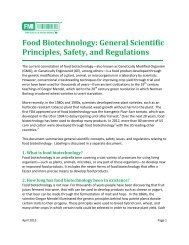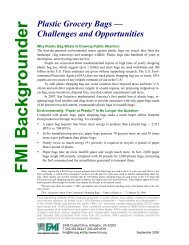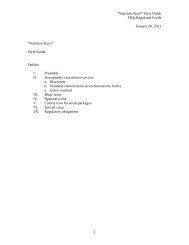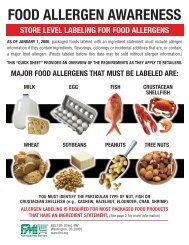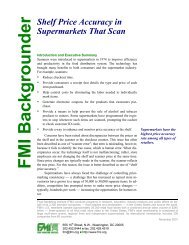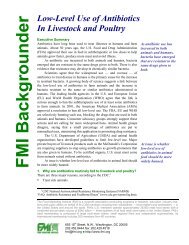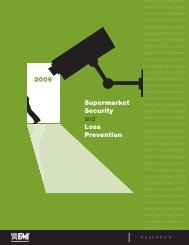Consumer Shopping Habits for Wellness and Environmentally ...
Consumer Shopping Habits for Wellness and Environmentally ...
Consumer Shopping Habits for Wellness and Environmentally ...
You also want an ePaper? Increase the reach of your titles
YUMPU automatically turns print PDFs into web optimized ePapers that Google loves.
General Growth in H+W Related Activities<br />
NUTRITION, WEIGHT CONTROL, AND DIETARY GUIDELINES<br />
Periphery consumers typically have limited concepts of nutrition, other than basic ideas that they<br />
should be eating more ―healthy‖ foods (largely produce <strong>and</strong> fresh meats <strong>and</strong> fish) <strong>and</strong> avoiding ―junk‖<br />
foods (e.g. potato chips), however, they often struggle maintaining those ideas in a behavioral sense.<br />
For Periphery consumers, nutrition, diet, <strong>and</strong> weight control are tightly correlated to one another. At<br />
the same time, they are conflated with ―health‖ in a general sense. That is to say, to many Periphery<br />
consumers, diet, weight, <strong>and</strong> health are almost the same thing; often discussions of health with<br />
Periphery consumers are framed as a struggle to lose or maintain weight. ―Dietary guidelines‖ often<br />
equate to simply ―being on a diet‖ in order to lose weight, without necessarily being correlated to<br />
ideas of nutrition.<br />
As consumers become increasingly involved in H+W, their daily habits tend to change markedly.<br />
Nutrition in a holistic sense becomes more important, as food ceases to simply be ―fuel‖ <strong>and</strong> is<br />
understood in its broader functionality, often providing an even more intense sense of enjoyment<br />
than it did be<strong>for</strong>e. That is to say, as a consumer becomes more involved in H+W, they do not eat<br />
―bl<strong>and</strong>‖ healthy foods, but generally tend to eat a more diverse <strong>and</strong> higher quality diet that includes<br />
more fresh food. Behaviorally, as consumers evolve, they get increasingly close to eating a fully<br />
―balanced‖ diet, though many are not keeping strict track of what they eating, embracing a general<br />
idea <strong>and</strong> practice of eating as diversely as possible without pre-scripted requirements.<br />
Unsurprisingly, along with fresh foods, the use of organics tends to increase as consumers evolve to<br />
more advanced levels of H+W, however, more recently, we have seen the overall use of organics<br />
tapering off, as Mid-level <strong>and</strong> Core consumers increasingly move toward both ―local‖ products <strong>and</strong><br />
non-organic foods of high quality levels (e.g. artisanal cheeses).<br />
FITNESS<br />
Fitness in the Periphery, like other matters of health, often tends to correlate with weight control,<br />
vanity, or both. <strong>Consumer</strong>s in the Periphery (with some exceptions e.g. bodybuilders) generally are<br />
the least successful consumers at maintaining fitness regimes. Often these consumers will frame<br />
less intense activities as ―exercise,‖ including leisurely walks, <strong>and</strong>, in some cases, household chores.<br />
Often, they will possess rarely-used exercise equipment that sits in garage or basement areas of<br />
their homes.<br />
Mid-level <strong>and</strong> Core consumers tend to be more successful in maintaining regular fitness routines.<br />
Often times, those fitness activities are joined with other lifestyle interests. For instance, many will<br />
choose hiking or biking as <strong>for</strong>ms of exercise in order to enjoy the outdoors while exercising.<br />
Traditional gym-based workouts begin to taper off as consumers move toward the Core, though<br />
more contemporary alternatives such as Pilates <strong>and</strong> Yoga continue to be popular with those<br />
consumers.<br />
28




